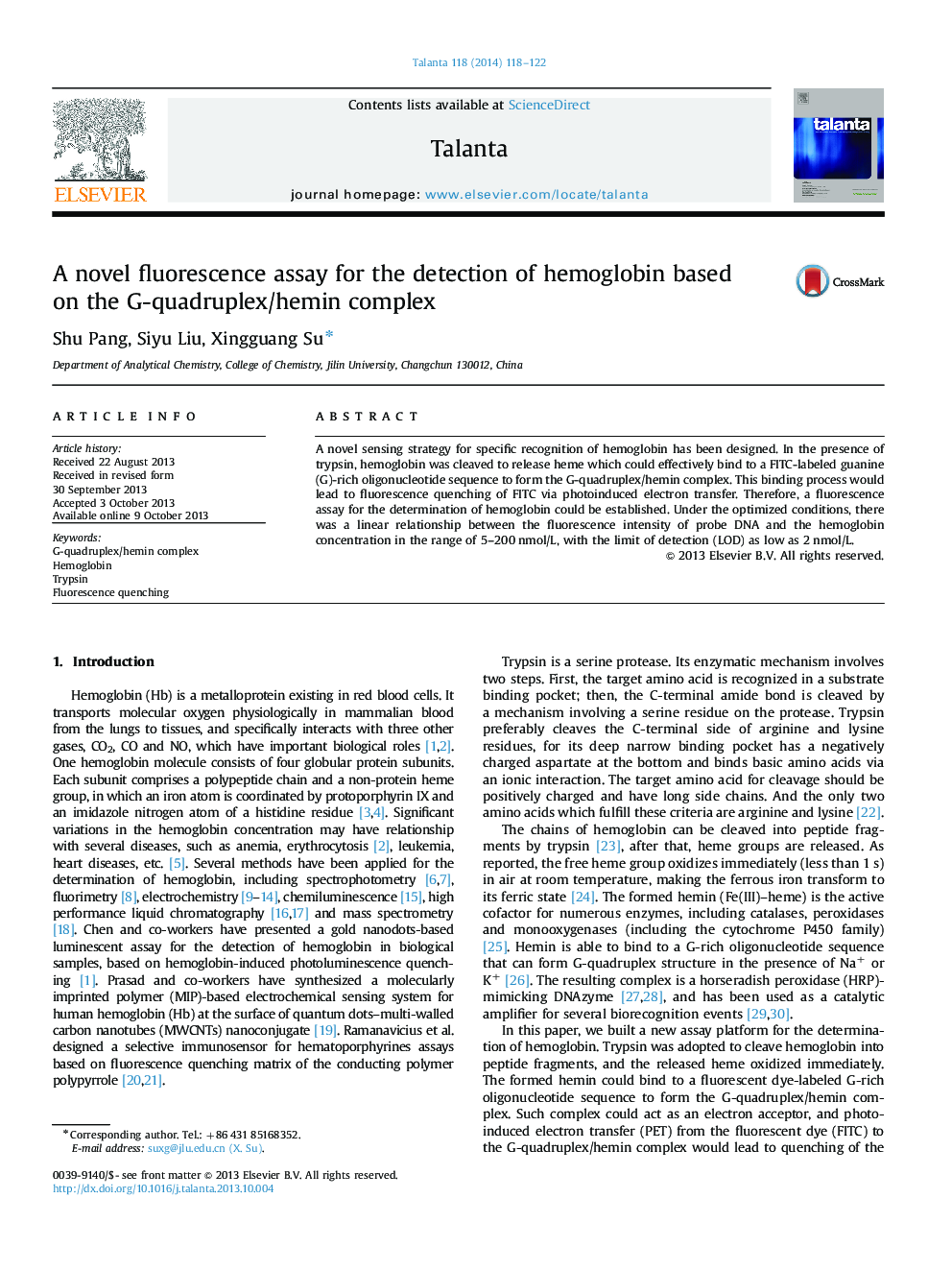| Article ID | Journal | Published Year | Pages | File Type |
|---|---|---|---|---|
| 1242097 | Talanta | 2014 | 5 Pages |
•The FITC-labeled G-rich DNA sequence was used as a fluorescence probe.•Hemin could bind to the probe DNA to form the G-quadruplex/hemin complex.•In the presence of trypsin, hemoglobin was cleaved to release heme.•The fluorescence of probe would be quenched by hemoglobin with trypsin.
A novel sensing strategy for specific recognition of hemoglobin has been designed. In the presence of trypsin, hemoglobin was cleaved to release heme which could effectively bind to a FITC-labeled guanine (G)-rich oligonucleotide sequence to form the G-quadruplex/hemin complex. This binding process would lead to fluorescence quenching of FITC via photoinduced electron transfer. Therefore, a fluorescence assay for the determination of hemoglobin could be established. Under the optimized conditions, there was a linear relationship between the fluorescence intensity of probe DNA and the hemoglobin concentration in the range of 5–200 nmol/L, with the limit of detection (LOD) as low as 2 nmol/L.
Graphical abstractA sensitive and selective fluorescence method for the detection of hemoglobin by using a fluorescent dye-labeled G-rich oligonucleotide sequence as the probe has been developed.Figure optionsDownload full-size imageDownload as PowerPoint slide
